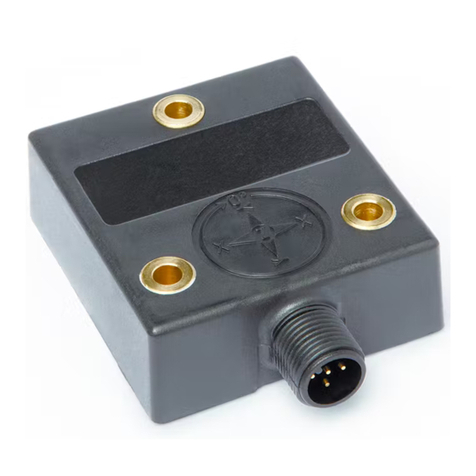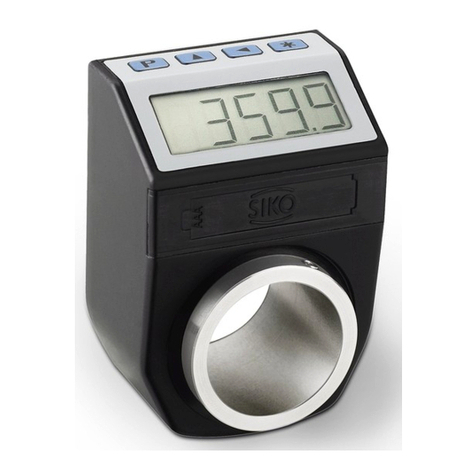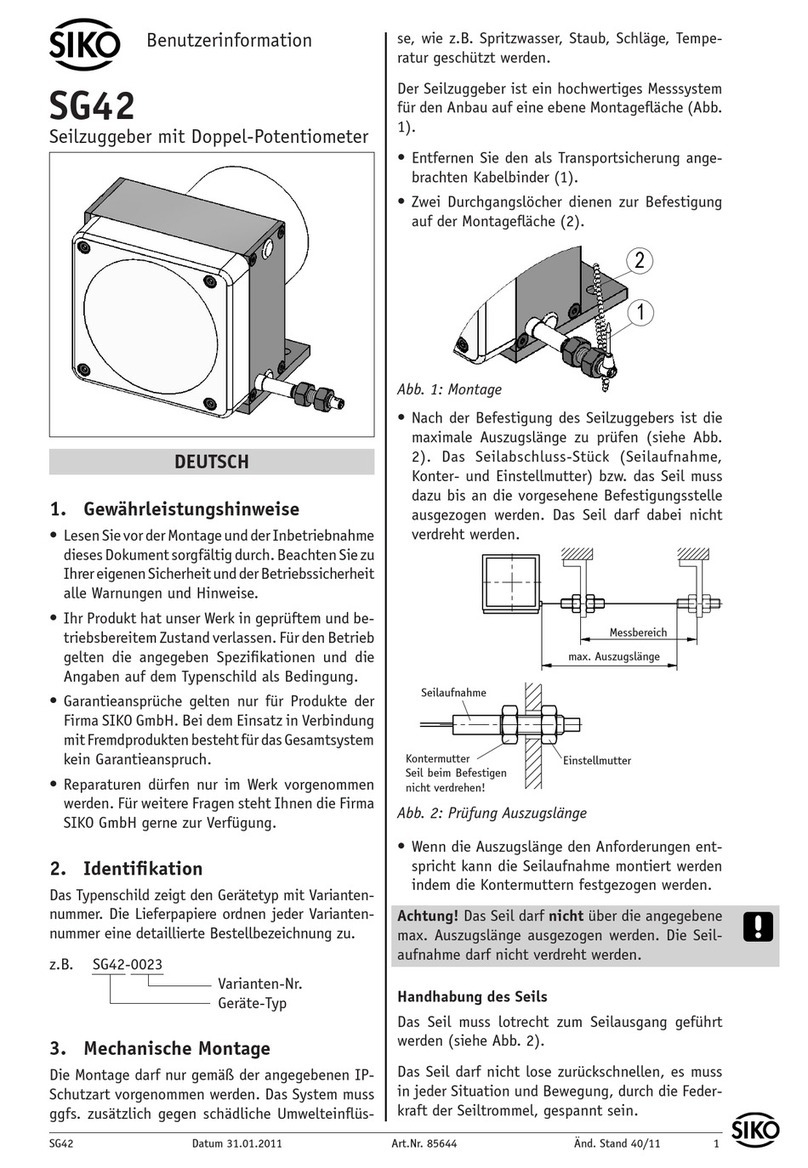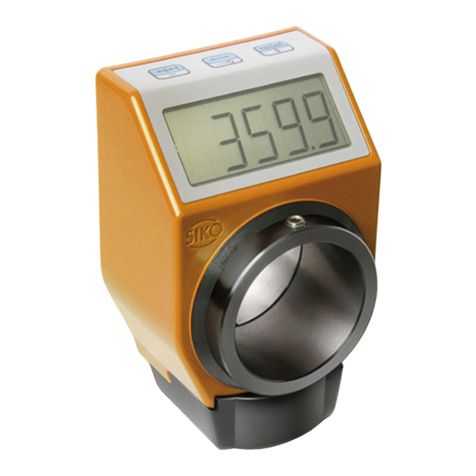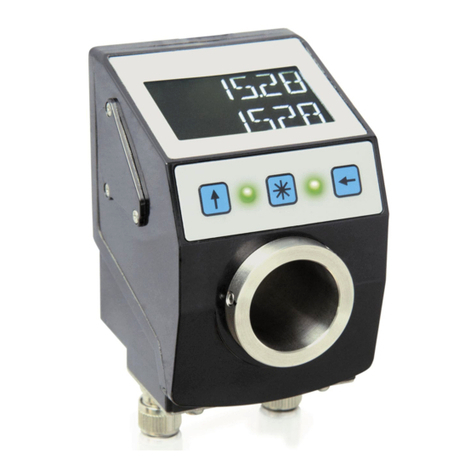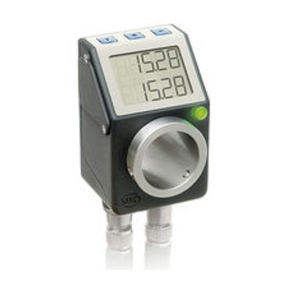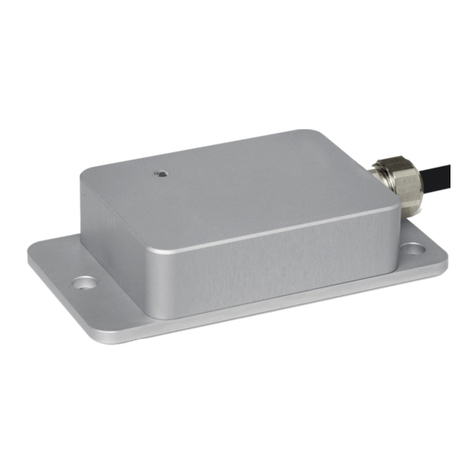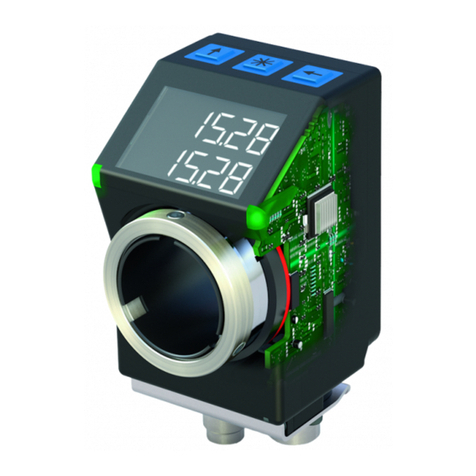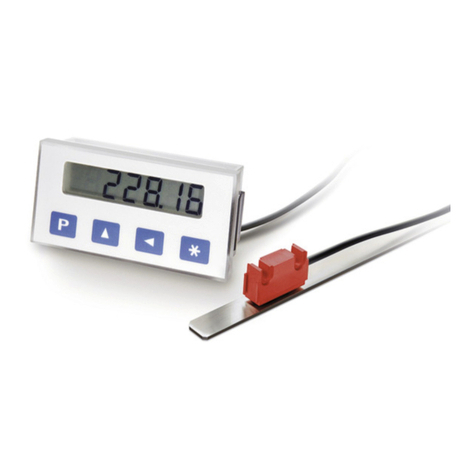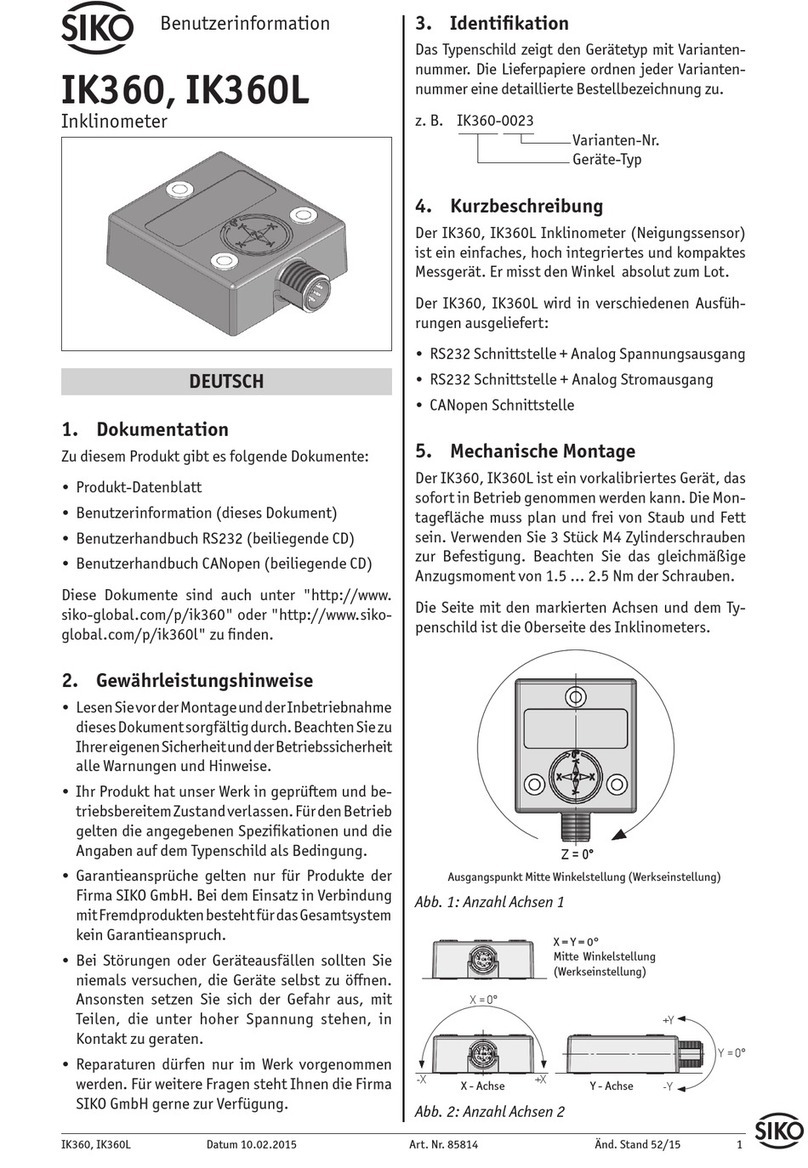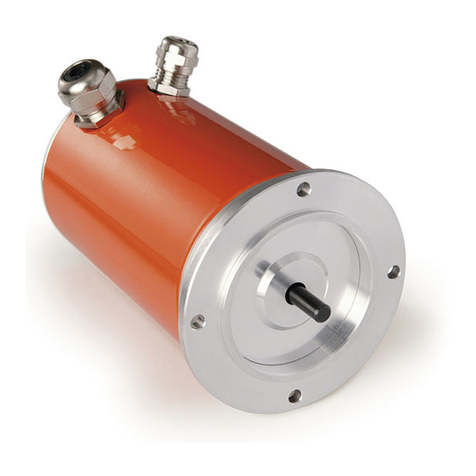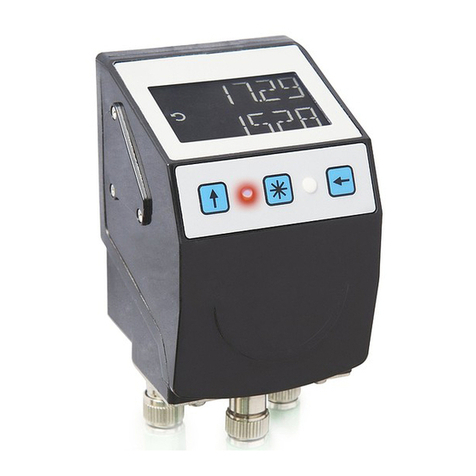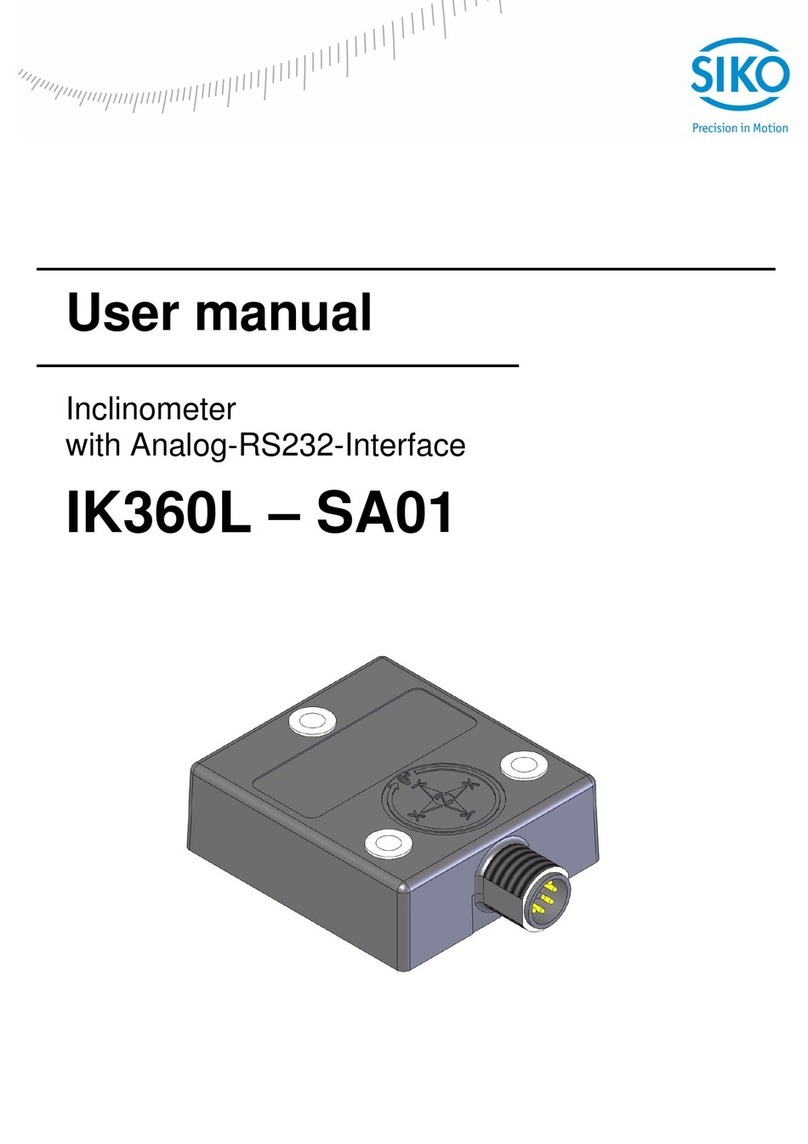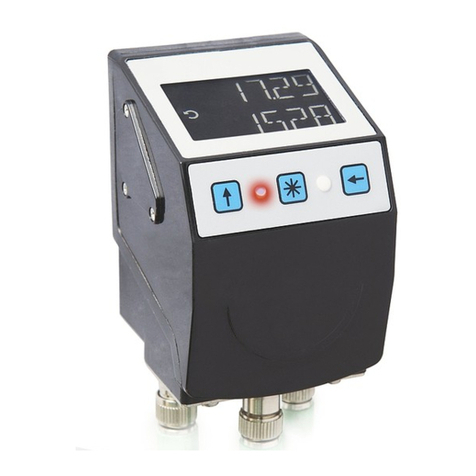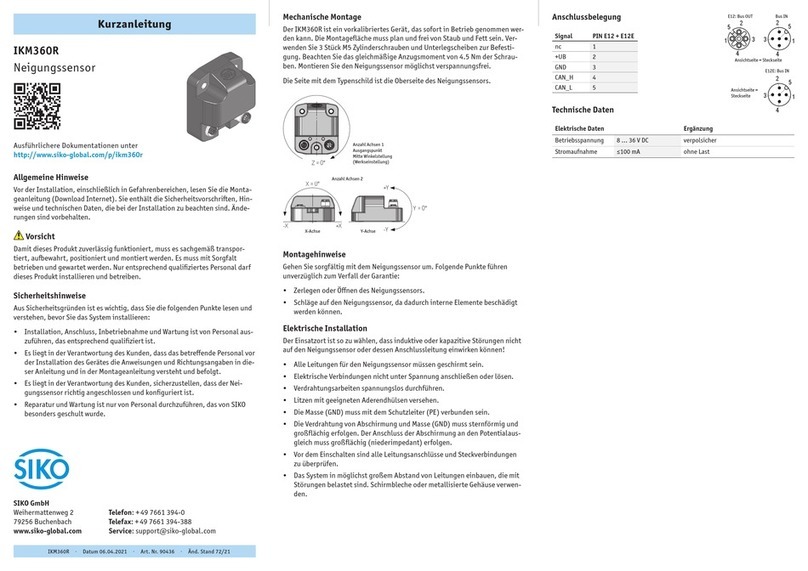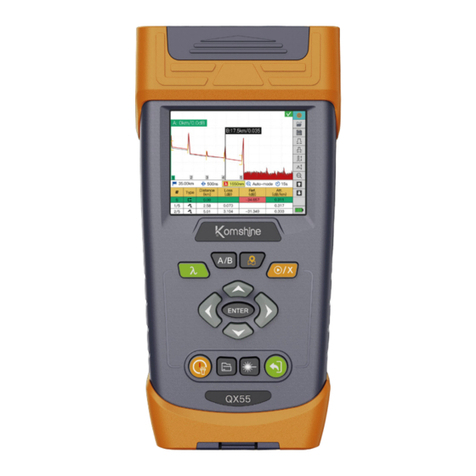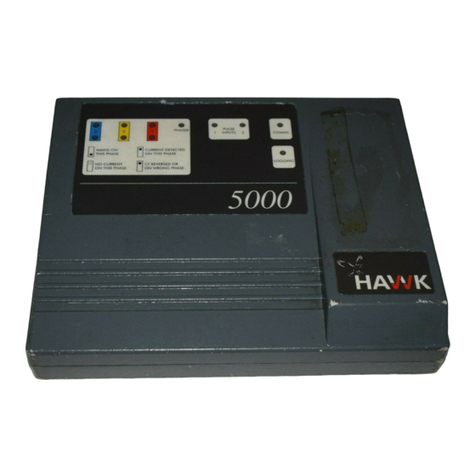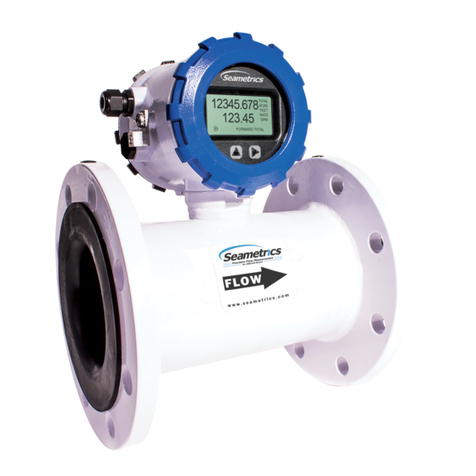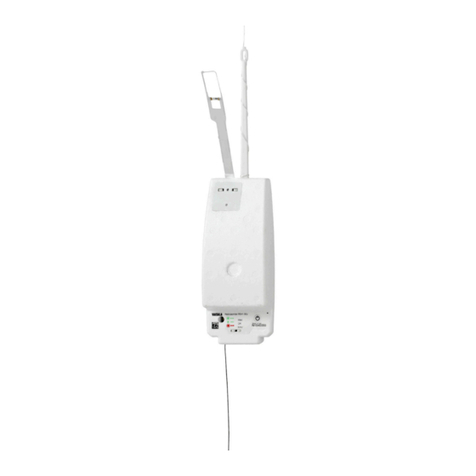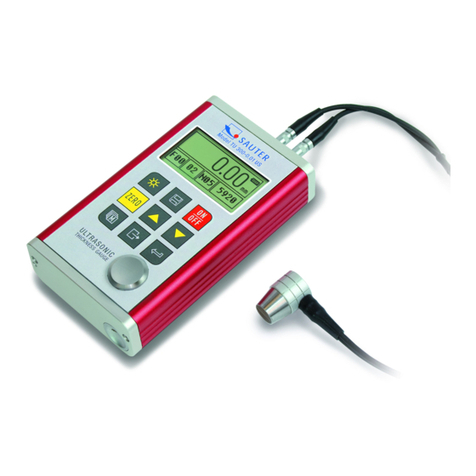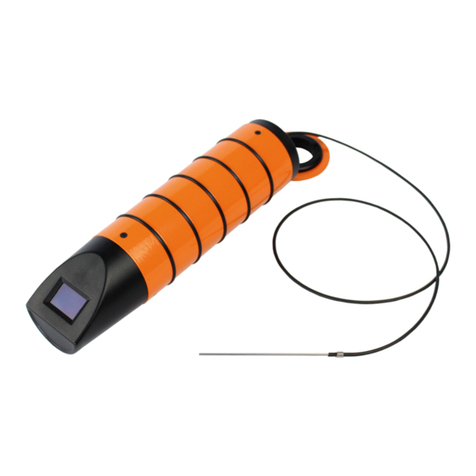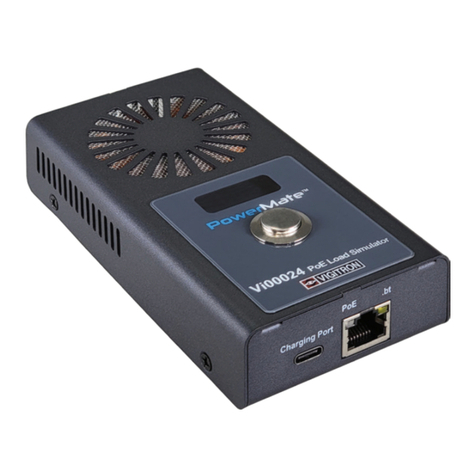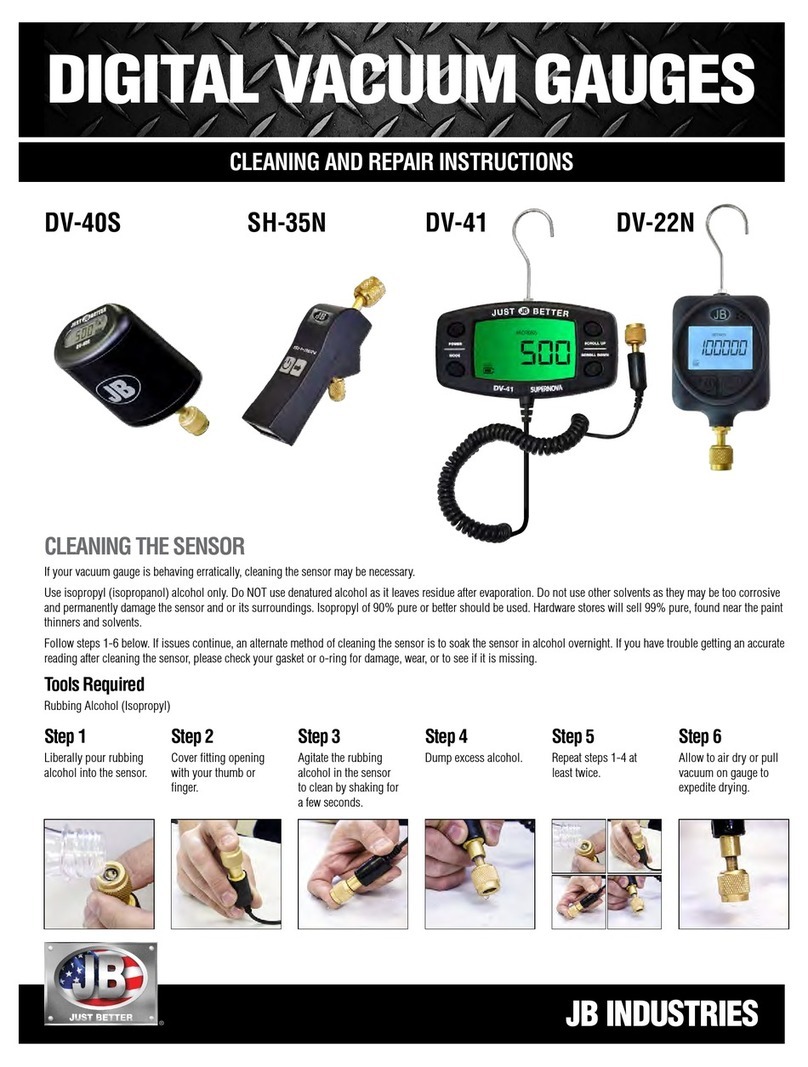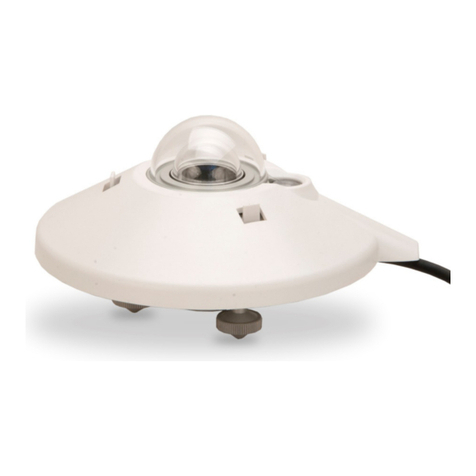Siko MB100 User manual

AS100+MB100 Datum 12.10.2007 Art.Nr. 79469 Änd. Stand 260/07 1
Abb. 1: Montage Magnetband
DEUTSCH
1. Gewährleistungshinweise
Lesen Sie vor der Montage und der Inbetriebnahme
dieses Dokument sorgfältig durch. Beachten Sie zu
Ihrer eigenen Sicherheit und der Betriebssicherheit
alle Warnungen und Hinweise.
Ihr Produkt hat unser Werk in geprüftem und be-
triebsbereitem Zustand verlassen. Für den Betrieb
gelten die angegeben Spezifikationen und die
Angaben auf dem Typenschild als Bedingung.
Garantieansprüche gelten nur für Produkte der
Firma SIKO GmbH. Bei dem Einsatz in Verbindung
mit Fremdprodukten besteht für das Gesamtsystem
kein Garantieanspruch.
Reparaturen dürfen nur im Werk vorgenommen
werden. Für weitere Fragen steht Ihnen die Firma
SIKO GmbH gerne zur Verfügung.
2. Identifikation
Magnetband: Das Magnetband ist durch eine fort-
laufende Bedruckung identifizierbar.
Beispiel Magnetbandbedruckung:
•
•
•
•
3. Mechanische Montage
Die Montage darf nur gemäß der angegebenen IP-
Schutzart vorgenommen werden. Das System muss
ggfs. zusätzlich gegen schädliche Umwelteinflüs-
se, wie z.B. Spritzwasser, Lösungsmittel, Staub,
Schläge, Vibrationen, starke Temperaturschwan-
kungen geschützt werden.
3.1 Montage Magnetband
Die Montage muss plan zur Montagefläche bzw. der
zu messenden Strecke erfolgen. Welligkeiten ver-
schlechtern immer die Messgenauigkeit.
Aus technischen Gründen muss bei der Länge, ge-
genüber der Messstrecke, ein Zumaß von 30mm
berücksichtigt werden.
Achtung! Um optimale Verklebungen zu errei-
chen müssen alle antiadhäsiven Fremdsubstanzen
(Öl, Fett, Staub usw.) durch möglichst rückstands-
los verdunstende Reinigungsmittel entfernt wer-
den. Als Reinigungsmittel eignen sich u.a. Ketone
(Aceton) oder Alkohole, die u.a. von den Firmen
Loctite und 3M als Schnellreiniger angeboten wer-
den. Die Klebeflächen müssen trocken sein und es
ist mit höchstmöglichem Anpressdruck zu verkle-
ben. Die Verklebungstemperatur ist optimal zwi-
schen 20°C und 30°C in trockenen Räumen.
Tip! Bei Verklebung langer Bänder sollte die
Schutzfolie des Klebebandes über eine kurze Teil-
strecke abgezogen werden, um das Band zu fixie-
ren. Daraufhin erfolgt das Ausrichten des Bandes.
Nun kann über die restliche Länge die Schutzfolie,
unter gleichzeitigem Andruck des Bandes, seitlich
herausgezogen werden (als Hilfsmittel kann eine
Tapetenandrückwalze verwendet werden).
Montageschritte (Abb. 1)
Befestigungsfläche (1) sorgfältig reinigen.
Am Magnetband die Schutzfolie (2) des Klebe-
bandes (3) entfernen.
Magnetband (4) aufkleben.
Magnetbandoberfläche sorgfältig reinigen.
Am Abdeckband (5) die Schutzfolie (6) des Kle-
bebandes entfernen.
Abdeckband aufkleben (an beiden Enden leicht
überlappen lassen).
Die überlappenden Enden des Abdeckbandes gegen
Ablösen sichern.
•
•
•
•
•
•
•
Benutzerinformation
AS100 + MB100
Auswerteelektronik
Polbreite: 1mm
Bandgenauigkeit: 0.02mm
Seriennummer
0
2
NNNN 1000
Auswerteelektronik: Das Typenschild zeigt den
Gerätetyp mit Variantennummer. Die Lieferpapie-
re ordnen jeder Variantennummer eine detaillierte
Bestellbezeichnung zu.
z.B. AS100-0023
Varianten-Nr.
Geräte-Typ

2 AS100+MB100 Datum 12.10.2007 Art.Nr. 79469 Änd. Stand 260/07
Abb. 2 Abb. 3
Abb. 4 Abb. 5
Abb. 6: Definition der Zählrichtung
Signal B vor A
Kabelabgangs-
richtung
Verfahrrichtung
Sensor
aktive Seite
Abstand Sensor/Magnetband
<1°
maximale Fluchtungsfehler
<1°
<1°
Abb. 7: Ausrichtung des Sensors
Abb. 8: Montage / Anschlüsse
Versorgung / Ausgangssignale
Sensoranschluss
Status-LED's
Achtung! Die Beeinflussung durch magnetische
Felder ist zu vermeiden. Insbesondere dürfen keine
Magnetfelder (z.B. Haftmagnete oder andere Dauer-
magnete) in direkten Kontakt mit dem Magnetband
geraten. In stromlosem Zustand werden Bewegun-
gen oder Verstellungen des Magnetsensors von der
Folgeelektronik nicht erkannt und erfaßt.
Montagebeispiele
Die einfache Montageart, durch angeschrägtes
Schutzband (Abb. 2), ist nur in sehr geschützter Um-
gebung zu empfehlen. Bei ungeschützer Umgebung
besteht Abschälgefahr. In solchen Fällen sind Monta-
gearten, wie in Abb. 3 und 4 gezeigt, geeigneter.
Den optimalen Schutz bietet die Montage in einer
Nut (Abb. 5), die so tief sein sollte, dass das Magnet-
band vollständig darin eingebettet werden kann.
Der maximale Abstand beträgt 0,4mm. Der Sen-
sor darf das Magnetband nicht berühren.
3.2 Montage Magnetsensor
Der Magnetsensor kann durch Verwendung von 2
Schrauben M3 befestigt werden. Wir empfehlen
die Verwendung von Unterlegscheiben.
Kabel sind so zu verlegen, dass keine Beschädi-
gungsgefahr durch Zug oder andere Maschinenteile
besteht. Falls nötig Schleppkette oder Schutz-
schlauch verwenden und Zugentlastung vorsehen.
Zur Zugentlastung können die mitgelieferten
Kabelschellen eingesetzt werden.
Auf richtige Ausrichtung bezüglich der Zähl-
richtung achten (Abb. 6).
•
•
Abstandmaße zwischen Sensor und Magnetband
sowie Winkeltoleranzen beachten, diese müssen
über die gesamte Messstrecke eingehalten werden!
(siehe Abb.7)
•
3.3 Montage Auswerteelektronik
Das Gerät ist für die Montage mittels Schraubbe-
festigung vorgesehen. Die seitlich an den Laschen
vorhandenen Bohrungen können zum direkten An-
schrauben verwendet werden (s. Abb. 8).
4. Elektrischer Anschluss
Die Auswerteelektronik wird mit fertig konfek-
tioniertem und angeschlossenem Magnetsensor
geliefert. Es ist nicht zulässig den Anschluss z.B.
durch Kabelverlängerungen zu ändern.
Verdrahtungsarbeiten dürfen nur spannungslos
erfolgen!
Vor dem Einschalten sind alle Leitungsanschlüsse
und Steckverbindungen zu überprüfen.
•
•

AS100+MB100 Datum 12.10.2007 Art.Nr. 79469 Änd. Stand 260/07 3
Abb. 9: DIP-Schalter-Einstellungen
Abb. 10: Phasendifferenz tW
Hinweise zur Störsicherheit
Alle Anschlüsse sind gegen äußere Störeinflüsse
geschützt. Der Einsatzort ist aber so zu wählen,
dass induktive oder kapazitive Störungen nicht
auf den Sensor oder dessen Anschlussleitung
einwirken können! Durch geeignete Kabelführung
und Verdrahtung können Störeinflüsse (z.B.von
Schaltnetzteilen, Motoren, getakteten Reglern
oder Schützen) vermindert werden.
Erforderliche Maßnahmen:
Nur geschirmtes Kabel verwenden. Den Kabel-
schirm beidseitig auflegen. Litzenquerschnitt der
Leitungen min. 0,14mm², max. 0,5mm².
Die Verdrahtung von Abschirmung und Masse
(0V) muss sternförmig und großflächig erfolgen.
Der Anschluss der Abschirmung an den Potenti-
alausgleich muss großflächig (niederimpedant)
erfolgen.
Das System muss in möglichst großem Abstand von
Leitungen eingebaut werden, die mit Störungen
belastet sind; ggfs. sind zusätzliche Maßnahmen
wie Schirmbleche oder metallisierte Gehäuse
vorzusehen. Leitungsführungen parallel zu Ener-
gieleitungen vermeiden.
Schützspulen müssen mit Funkenlöschgliedern
beschaltet sein.
Spannungsversorgung
Die Spannungswerte sind abhängig von der Ge-
räteausführung und sind den Lieferpapieren oder
dem Typenschild zu entnehmen:
z.B. : 24 VDC ±20%
Anschlussbelegung
Die Ausgangssignale und die Versorgungsspannung
werden über eine 9-polige D-Sub-Steckverbindung
geführt (siehe Abb. 8).
Achtung! Schrauben Sie den D-SUB-Stecker mit
den dafür am Stecker vorgesehenen Schrauben an
der Buchse fest. Nur so ist eine saubere und stabi-
le elektrische Verbindung gewährleistet.
Pin Nr. Belegung
1 A
2 A/
3 GND
4 B
5 B/
6 O/
7 0
8 +UB
9 Ready
•
•
•
•
5. Parametereinstellungen
Vor dem Anschluss der Spannungsversorgung kann
die AS100 konfiguriert werden. Dazu sind folgende
Schritte erforderlich:
Lösen der vier Gehäuseschrauben.
Öffnen des Gehäuses.
Einstellung am DIP-Schalter entsprechend Abb.
9 vornehmen.
•
•
•
Grundeinstellungen
Soweit nicht separat vermerkt, gilt folgende
Grundeinstellung:
Auflösung: 0.001mm
6. Ausgangssignale
Die Auswerteelektronik setzt die magnetische Län-
geninformationen des Magnetsensors in inkremen-
tale Ausgangssignale um. Die Umsetzung der Sig-
nale ist abhängig von der Verfahrgeschwindigkeit.
Phasendifferenz tW
Die Phasendifferenz tW berechnet sich wie folgt:
Formel: tW= (976 x Aufl. - V x 50) : V (in Nano-
sekunden)
tW= Phasendifferenz in Nanosekunden
Aufl.= eingestellte Auflösung
V= Verfahrgeschwindigkeit in m/s
Achtung! Die Ausgangssignale sind annähernd
geschwindigkeitsproportional. Bedingt durch das
Auswerteverfahren können bei Geschwindigkeiten
>4m/s Burstsignale entstehen. Dies ist bei der
Auslegung von Messsystemen speziell bei Lagere-
gelkreisen zu beachten.

4 AS100+MB100 Datum 12.10.2007 Art.Nr. 79469 Änd. Stand 260/07
Abb. 11: Ausgangssignale A und B mit Referenzsignal
Abb. 12: Prinzip der Referenzierung
Schaltweg des Referenzwertgebers
REF muss <1mm betragen!
Signalfolge
Das Referenzsignal 0 wird unabhängig von der Auf-
lösung alle 1mm ausgegeben.
Achtung! Das Indexsignal hat keine logische Ver-
knüpfung zu A und B.
9. Wartung des Magnetbandes
Die Oberfläche des Magnetbandes ist bei starker
Verschmutzung durch Staub, Späne, Feuchtigkeit,
usw., von Zeit zu Zeit mit einem weichen Lappen
zu reinigen.
10. Fehlerbehandlung
Die Auswerteelektronik AS100 ist nur ein Element
innerhalb eines Messsystems. Bei Fehlfunktionen
kann die Ursache bei allen Elementen liegen. Ent-
sprechend systematisch muss bei der Fehlersuche
vorgegangen werden:
Prüfen Sie alle Versorgungsspannungen.
Prüfen Sie alle Leitungen, Steck- und Schraub-
verbindungen.
Trennen Sie die Verbindung zu Folgeelektronik und
prüfen Sie, ob die Ausgangssignale der Auswerte-
elektronik vorhanden sind. Die LEDs müssen bei
Bewegung des Magnetsensors blinken.
Prüfen Sie, ob alle Parameter auf die Folgeelek-
tronik abgestimmt sind (Zählfrequenz, Auflösung,
Ausgangsbeschaltung).
Typische Fehler, die bei Anbau und Betrieb
auftreten:
Das Magnetband wurde falsch montiert /aktive
Seite nach unten. (s.Kap. 3.1)
Zum Schutz des Magnetbandes wurde nicht das
mitgelieferte Abdeckband verwendet. Das Abdeck-
band muss nichtmagnetisierbar sein.
Der Sensor ist nicht korrekt angeschlossen. An-
schluss überprüfen.
Die Abstandstoleranz zwischen Sensor und
Magnetband wurde nicht über die gesamte
Messstrecke eingehalten, der Sensor streift auf
dem Magnetband. (Abb. 7)
Kabelunterbrechung / Abtrennung durch scharfe
Kanten / Quetschung.
Der Sensor ist mit der aktiven Seite vom Band
abgewandt montiert. (Abb. 7)
Der Sensor wurde nicht entsprechend Abb. 6 und
7 ausgerichtet.
•
•
•
•
•
•
•
•
•
•
•
Ready-Signal
Mit dem Ready-Ausgang lassen sich in Folgesteu-
erungen fehlerhafte Zustände erkennen. Der Aus-
gang wird dann aktiviert (aktiv low), wenn die-
Sensorik in irgend einer Weise gestört wird.
Ready high: initialisiert und ungestört
Ready low: Störung
7. Inbetriebnahme
Nach ordnungsgemäßer Montage und Verdrahtung
kann die Auswertelektronik durch Einschalten der
Versorgungsspannung in Betrieb gesetzt werden.
Das Gerät initialisiert sich selbsttätig nach dem
Einschalten. Die 'POWER'-Leuchtdiode auf der
Oberseite des Gerätes leuchtet. (siehe Abb.9)
Beim Verfahren des Magnetsensors blinken die Leucht-
dioden A und B auf der Oberseite des Gerätes.
8. Referenzierung
Die Auswerteelektronik AS100 ist ein Bestandteil
eines inkrementalen Messsystems, das zur abso-
luten Messung an einer definierten Stelle (Refe-
renzpunkt) referenziert werden muss. Dazu muss
das Referenzsignal mit dem Signal eines Refe-
renzwertgeber REF (z.B. Nockenschalter oder Nä-
herungsschalter) verknüpft werden. Reagiert die
Folgeelektronik flankengesteuert, läßt sich der
Referenzpunkt mit einer Wiederholgenauigkeit von
0,01mm einrichten.

AS100+MB100 Datum 12.10.2007 Art.Nr. 79469 Änd. Stand 260/07 5
Fig. 1: Mounting of the magnetic strip
ENGLISH
1. Warranty information
In order to carry out installation correctly, we
strongly recommend this document is read very
carefully. This will ensure your own safety and
the operating reliability of the device.
Your device has been quality controlled, tested
and is ready for use. Please observe all warnings
and information which are marked either directly
on the device or specified in this document.
Warranty can only be claimed for components
supplied by SIKO GmbH. If the system is used
together with other products, there is no warranty
for the complete system.
Repairs should be carried out only at our works.
If any information is missing or unclear, please
contact the SIKO sales staff.
2. Identification
Magnetic strip: identification by printing on the
strip. Example Magnetic strip printing:
•
•
•
•
3. Installation
For mounting, the degree of protection specified
must be observed. If necessary, protect the unit
against environmental influences such as sprayed
water, dust, knocks, extreme temperatures.
3.1 Mounting the magnetic strip
The mounting surface / measuring track must be
flat. Buckles or bumps will lead to measuring in-
accuracies.
For technical reasons the strip should be approx.
30mm longer than the actual measuring distance.
Attention! To guarantee optimal adhesion oil,
grease dust etc. must be removed by using clean-
sing agents which evaporate without leaving re-
sidues. Suitable cleansing agents are eg. ketones
(acetone) or alcohols; Messrs. Loctite and 3M can
both supply such cleansing liquid. Make sure that
the surface to be glued is dry and apply the strip
with maximum pressure. Glueing should preferably
be undertaken at temperatures between 20°C to
30°C and in dry atmosphere.
Advice! When applying long pieces of magnetic
strip do not immediately remove the complete
protective foil, but rather peel back a short part
from the end sufficient to fix the strip. Now align
the strip. As the protective strip is then peeled
back and out press the tape firmly onto the moun-
ting surface. A wall paper roller wheel could be
used to assist in applying pressure onto the mag-
netic strip when fixing it in position.
Mounting steps (see fig. 1)
Clean mounting surface (1) carefully.
Remove protective foil (2) from the adhesive side
of the magnetic strip (3).
Stick down the magnetic strip (4).
Clean surface of magnetic strip carefully.
Remove protective foil (6) from adhesive tape on
the cover strip (5).
Fix cover strip (both ends should slightly over-
lap).
Also fix cover strip’s ends to avoid unintentional
peeling.
•
•
•
•
•
•
•
User Information
AS100 + MB100
Translation Module
Translation module: Please check the particular
type of unit and type number from the identificati-
on plate. Type number and the corresponding ver-
sion are indicated in the delivery documentation.
e.g. AS100-0023
version number
type of unit
pole pitch: 1mm
accuracy: 0.02mm
serial number
0
2
NNNN 1000

6 AS100+MB100 Datum 12.10.2007 Art.Nr. 79469 Änd. Stand 260/07
Fig. 2 Fig. 3
Fig. 4 Fig. 5
Fig. 6: Definition of counting direction
Signal B before A
cable outlet
travel direction
sensor
active side
Gap between sensor and magnetic strip
<1°
max. deviation
<1°
<1°
Fig. 7: Mounting of sensor
Fig. 8: Mounting / connections
Power supply / output signals
connection of the magnetic sensor
Status-LED's
Attention! Do not expose the system to magne-
tic fields. Any direct contact of the magnetic strip
with magnetic fields (eg. adhesive magnets or
other permanent magnets) is to be avoided. Sen-
sor movements during power loss are not captured
by the follower electronics.
Mounting examples
Mounting with chamfered ends (fig. 2) is not re-
commended unless the strip is installed in a safe
and protected place without environmental influ-
ences. In less protected mounting places the strip
may peel. There we recommend mounting accord.
to fig. 3 and 4.
Mounting in a groove (fig. 5) best protects the
magnetic strip. The groove should be deep enough
to totally embed the magnetic strip.
3.2 Mounting the sensor
Use two M3 screws to fix the magnetic sensor. We
recommend to use washers.
Cable layout should avoid damages due to cable
strain or other machine parts. If necessary use a
drag chain or protective hose and provide for strain
relief. Zur Zugentlastung können die mitgelieferten
Kabelschellen eingesetzt werden.
Sensor must be aligned correctly with respect
to the counting direction (see fig. 6).
•
•
When mounting the magnetic sensor, ensure that
the gap between strip & sensor and the max.
admissable deviation are maintained over the
total measuring length! (see fig. 7)
The max. gap is 0,4mm. Sensor must not touch
the magnetic strip.
•
3.3 Mounting the translation module
The device has been designed for mounting with
screws. The lateral holes in the flanges are for di-
rect fixing with screws (see fig. 9).
4. Electrical connection
Magnetic sensor and translation module are sup-
plied with ready made cable and sensor connec-
tion. Any modification, for example by a cable
extension, is not permitted.
Wiring must only be carried out with power off!
Check all lines and connections before switching
on the equipment.
Interference and distortion
All connections are protected against the effects
of interference. The location should be selected
•
•

AS100+MB100 Datum 12.10.2007 Art.Nr. 79469 Änd. Stand 260/07 7
Fig. 9: Parameter setting, position of the DIP switches
Fig. 10: Phase difference tW
Fig. 11: Output signals A and B with reference signal
to ensure that no capacitive or inductive in-
terferences can affect the sensor or the con-
nection lines! Suitable wiring layout and choice
of cable can minimise the effects of interference
(eg. interference caused by SMPS, motors, cyclic
controls and contactors).
Necessary measures:
Only screened cable should be used. Wire cross sec-
tion is to be at least 0,14mm², max. 0,5mm².
Wiring to the screen and ground (0V) must
be secured to a good point. Ensure that the
connection of the screen and earth is made to
a large surface area with a sound connection to
minimise impedance.
The sensor should be positioned well away from
cables with interference; if necessary a protective
screen or metal housing must be provided. The
running of wiring parallel to the mains supply
should be avoided.
Contactor coils must be linked with spark sup-
pression.
Power supply
is made via mains connection on rear of the de-
vice. The correct supply voltage is indicated in the
delivery documentation:
eg. : 24 VDC ±20%
Connection of the translation module
Output signals and voltage supply are connected
to the 9-poles D-Sub terminal strip (see fig. 8).
Attention! Fixing of the D-Sub plug to the socket
is to be made by using the screws on the plug. This
will guarantee a neat and effective connection.
Pin No. Designation
1 A
2 A/
3 GND
4 B
5 B/
6 O/
7 0
8 +UB
9 Ready
5. Parameters
Before powering the AS100, the unit can be pro-
grammed. Please proceed as follows:
Loosen the 4 screws on the casing.
Open the casing.
•
•
•
•
•
•
Carry out DIP-switch setting according to fig. 4.•
Standard parameter setting
Unless specified otherwise, parameters are preset
as follows:
Resolution: 0.001mm
6. Output signals
The magnetic length information collected by the
magnetic sensor is converted by the translation
module into incremental output signals.
Phase difference tW
The phase difference tW is shown below:
Formula: tW= (976 x res. - V x 50) : V (in nano-
seconds)
tW= phase difference in nanoseconds
res.= programmed resolution
V= travel speed in m/s
Attention! The output signals are almost speed-
proportional. But due to underlying interpretating
procedure, burst signals may arise burst signals
at speeds >4m/s. This should be considered when
planning position control systems.
Signal sequence
The zero reference signal is issued every 1mm, ir-
respective of the resolution.

8 AS100+MB100 Datum 12.10.2007 Art.Nr. 79469 Änd. Stand 260/07
Fig. 12: Principle of calibration
The active signal of the reference
switch should be <1mm!
SIKO GmbH
Werk / Factory:
Weihermattenweg 2
79256 Buchenbach-Unteribental
Postanschrift / Postal address:
Postfach 1106
79195 Kirchzarten
Telefon/Phone +49 7661 394-0
Telefax/Fax +49 7661 394-388
E-Mail info@siko.de
Internet www.siko.de
Service [email protected]e
Ready signal
The ready output allows the recognition of defec-
tive states by the follower controls. The output is
activated (active low) whenever the sensor signals
are disturbed.
Ready high: initialized and undisturbed
Ready low: disturbed
7. Commissioning
When mounted and connected correctly, the trans-
lation module can be switched on.
Initizialisation of the AS100 is carried out auto-
matically as soon as the device is switched on. The
'POWER'-LED on the device's top glows.
As soon as the magnetic sensor moves, the A and
B LEDs start flickering.
8. Calibration
The translation module AS100 is one component
of an incremental measuring system. For absolute
measuring the system must be adjusted to a defi-
ned reference point (calibrated). This can for ex-
ample be achieved by linking the reference signal
with the signal issued by a reference point source
REF (eg. cam switch or proximity switch). If the
follower electronics are able to recognize signal
edges, the reference value can be adjusted with a
repeat accuracy of 0,01mm.
during error search:
First check all supply voltages.
Are cables, plugs or screwed connectors defective
or loose?
Disconnect the follower electronic and check
whether the tranlsation module's output signals
are available. The LEDs must light up as soon as
the sensor moves.
Check whether parameter programming is attuned
to the follower electronics (counting frequency,
resolution, output circuit).
Below are some typical errors which may occur
during installation and operation:
Magnetic strip incorrectly mounted (active sur-
face must be mounted towards the sensor) (see
chapter 3.1)
Use of foreign protective strip. Must always be
non-magnetic.
Sensor incorrectly connected.
Tolerance for the gap between magnetic sensor and
magnetic strip not observed over the total travel
distance. Sensor touches strip (see fig. 7)
Cable squeezed / interrupted / cut by sharp
edges.
Sensor’s active side not mounted towards the
magnetic strip (see fig. 7).
Sensor has not been aligned according to chap.
3.2.
•
•
•
•
•
•
•
•
•
•
•
Attention! The index signal is generated indepen-
dent from signal A and B.
9. Maintenance magnetic strips
We recommend cleaning the magnetic strip’s surface
from time to time with a soft rag. This avoids dirt
(dust, chips, humidity ...) sticking to the strip.
10. Trouble shooting
The translation module AS100 is only one compo-
nent of the magnetic strip length measuring sys-
tem. Error states can be caused by all components.
Therefore, you should proceed very systematically
This manual suits for next models
1
Table of contents
Languages:
Other Siko Measuring Instrument manuals
Popular Measuring Instrument manuals by other brands
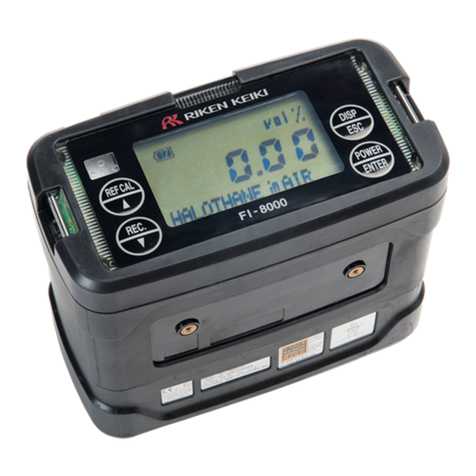
Riken Keiki
Riken Keiki FI-8000 operating manual

Emerson
Emerson Rosemount 3812 Maintenance and troubleshooting manual
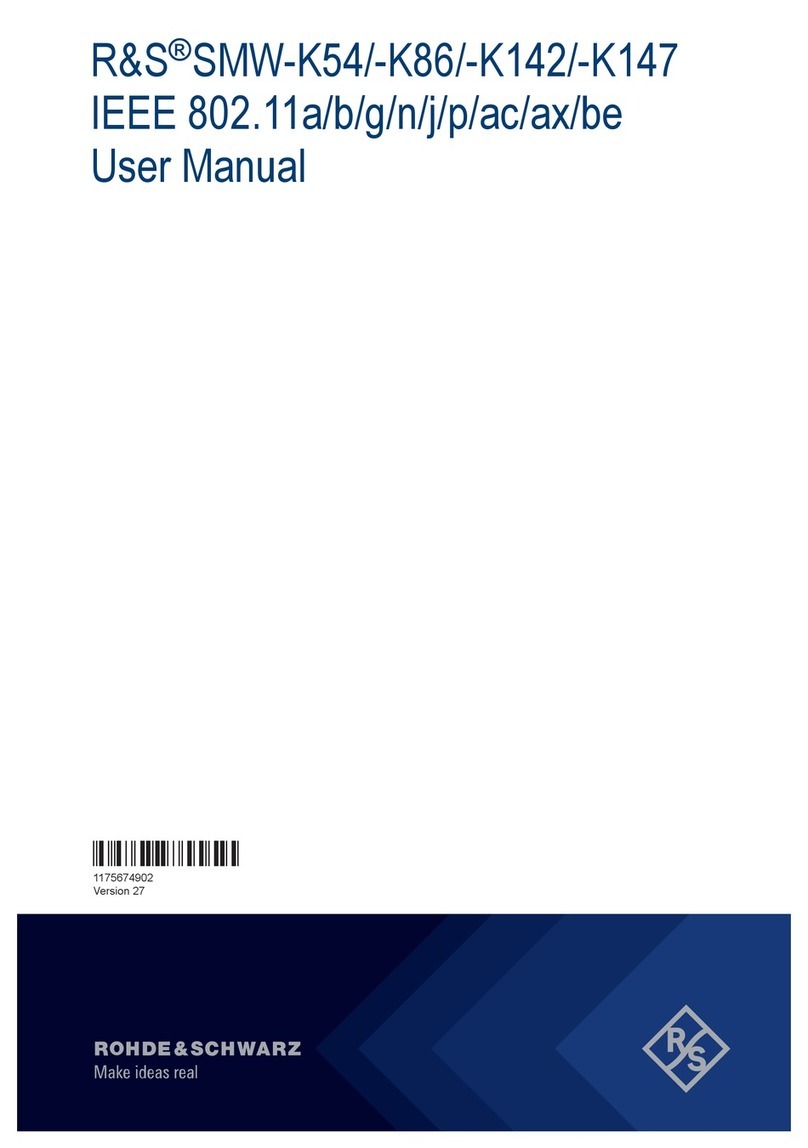
Rohde & Schwarz
Rohde & Schwarz R&S SMW-K54 user manual

Morningstar
Morningstar RM-1 Installation and operation manual
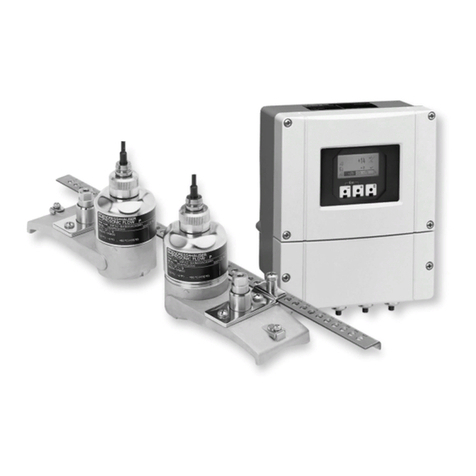
Endress+Hauser
Endress+Hauser Proline Prosonic Flow 93 Brief operating instructions
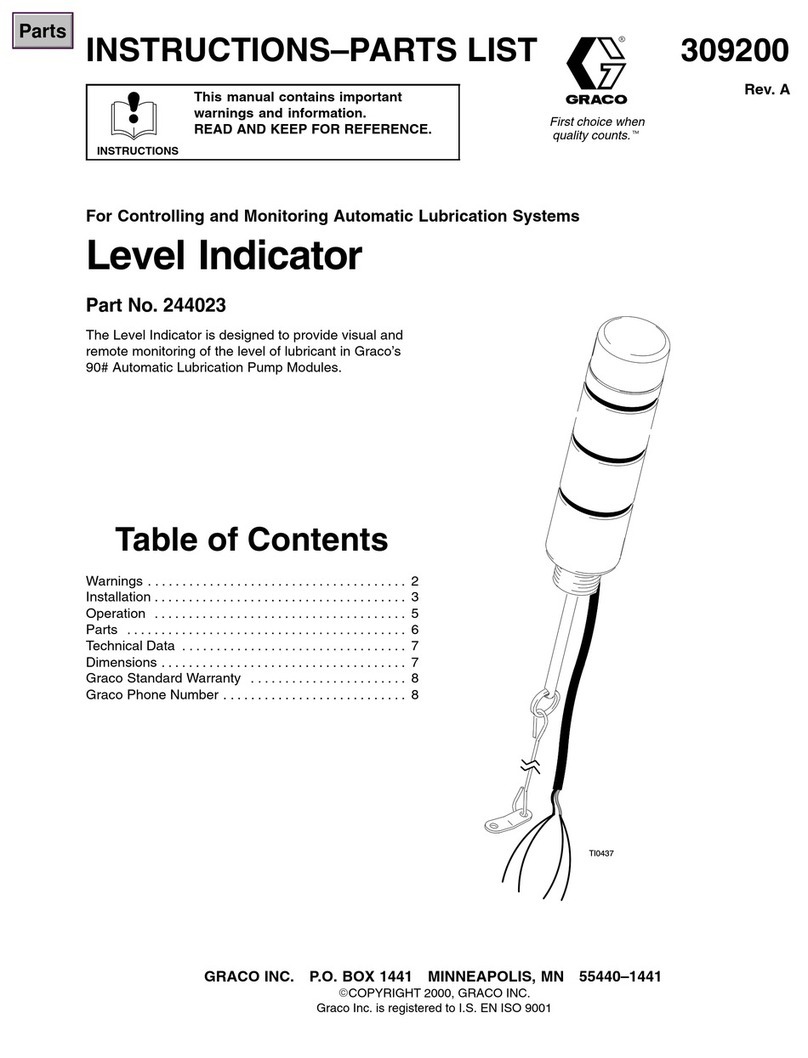
Graco
Graco 244023 Instructions and parts list
